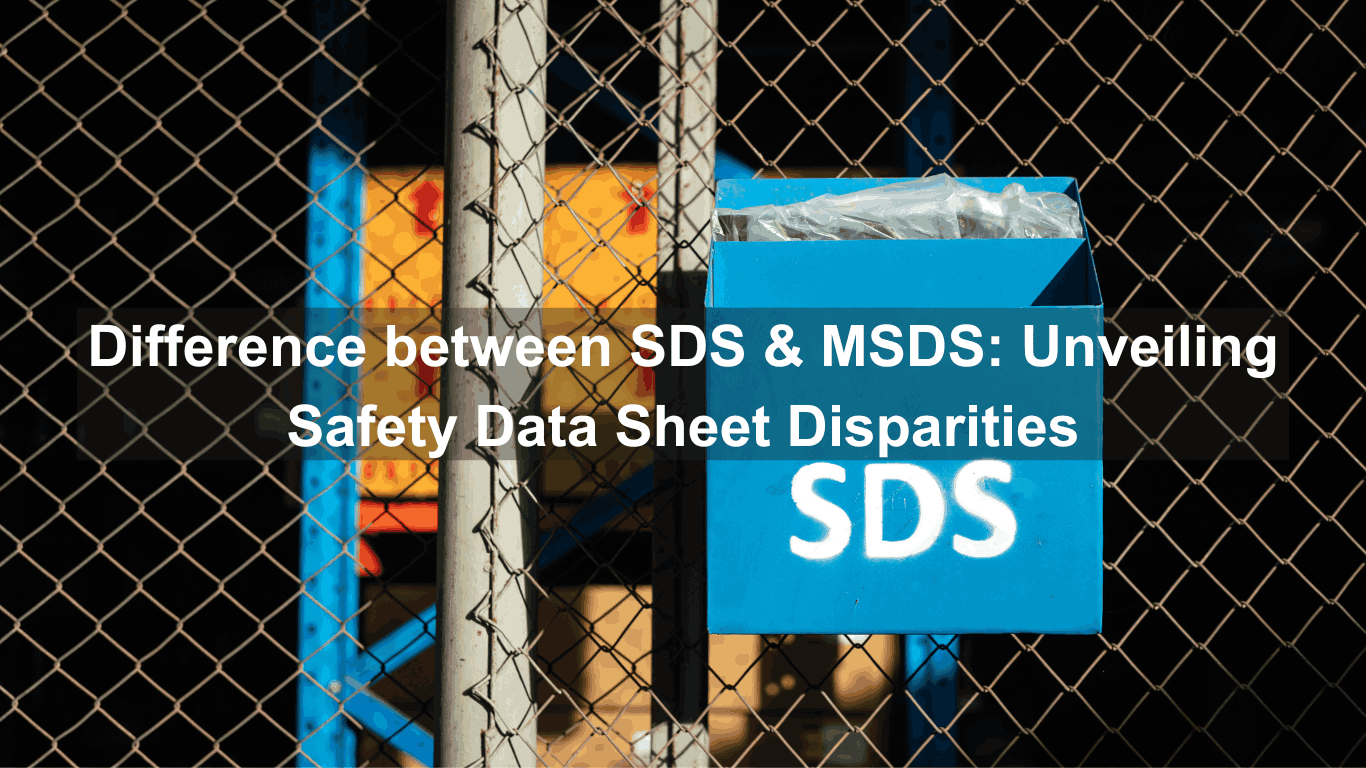Navigating the industrial landscape requires a keen understanding of safety protocols. In this article, we delve into the Difference between SDS Certificate & MSDS Certificate, unraveling the intricacies of Safety Data Sheets. As a vital aspect of occupational safety, these sheets play a pivotal role in ensuring a secure working environment.
The Basics: SDS and MSDS Unveiled
In this digital age, Safety Data Sheets (SDS) stand as the contemporary evolution of Material Safety Data Sheets (MSDS). SDS encompasses more than just hazardous materials, providing comprehensive data on substances used in various industries. From chemical properties to safe handling procedures, it is a robust tool for safeguarding workplace well-being.
Material Safety Data Sheet (MSDS): A Historical Context
Once a staple, the Material Safety Data Sheet Certificate (MSDS) laid the groundwork for SDS. It primarily focused on hazardous materials, offering insights into their characteristics and precautions. However, with advancements, SDS emerged to address limitations, providing a broader scope of information.
- Regulatory Landscape: Navigating Compliance
Occupational Safety and Health Administration (OSHA) mandates the use of SDS, ensuring workplaces adhere to safety standards. Understanding the guidelines set by OSHA is crucial for businesses, fostering compliance and minimizing risks.
- Transitioning from MSDS to SDS: Regulatory Implications
The transition from MSDS to SDS was not just a semantic shift but a regulatory transformation. Complying with the Globally Harmonized System (GHS), the change aimed to standardize hazard communication globally. This transition is integral for businesses operating on an international scale.
Key Differences Explored
One glaring difference lies in the depth of information provided. SDS goes beyond the basics covered by MSDS, offering a more detailed analysis of substances. From ecological impact to transport information, SDS provides a holistic overview.
- Format and Structure: SDS Enhances Readability
SDS employs a standardized 16-section format, enhancing readability and accessibility. Unlike MSDS, which varied in structure, the uniformity of SDS aids users in quickly locating essential information. This structured approach is a notable upgrade.
FAQs: Addressing Common Queries
- How Often Should SDS be Updated?
SDS should be updated within three months of new information regarding the hazards or safe use of a substance. Regular updates ensure that workers have access to the latest safety information.
- Can SDS be Digitally Stored?
Yes, digital storage of SDS is permissible as long as employees have easy access during all work shifts. However, contingency plans should be in place for technical failures.
- Are Small Businesses Exempt from SDS Requirements?
No, regardless of the business size, if hazardous chemicals are present, SDS compliance is mandatory. Safety is paramount, irrespective of the scale of operations.
- Difference in International SDS Formats: How to Navigate?
While the GHS standardizes SDS globally, variations exist. Businesses operating internationally should familiarize themselves with regional nuances to ensure compliance.
- How to Train Employees on SDS Usage?
Employee training is crucial. Conduct regular workshops to familiarize staff with SDS content, emphasizing the importance of adhering to safety guidelines.
- What Should Employers Prioritize: SDS or MSDS?
Given the regulatory shift and comprehensive nature, prioritizing SDS is advisable. Transitioning ensures compliance with modern safety standards.
Conclusion
In conclusion, understanding the Difference between SDS & MSDS Certificate is paramount for businesses prioritizing occupational safety. The evolution from MSDS to SDS signifies a commitment to global safety standards. Embracing this transition fosters a secure working environment, safeguarding both employees and enterprises.



